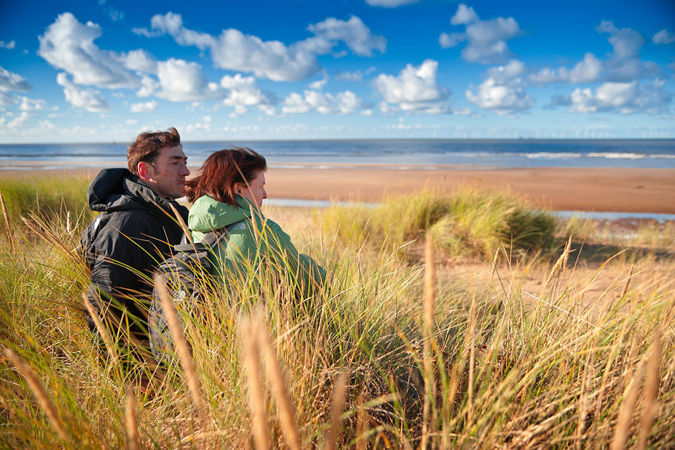Rejuvenating the dunes at Gronant and Talacre

On Saturday 29 June people around the globe will celebrate World Sand Dune Day and seize the opportunity to highlight the importance of protecting and enhancing these vital coastal habitats.
This will be the fourth annual celebration which was established in 2021 by the Sands of LIFE and Dynamic Dunescapes projects.
Here Neil Smith, NRW Conservation Advisor, talks us through the importance of sand dune habitats and our work to restore at Gronant and Talacre.
--
Sand dunes are often overlooked habitats, but they are home to a range of rare flora and fauna, such as little terns, orchids, natterjack toads, as well as a cacophony of invertebrates such as butterflies, moths and mining bees, many of which are classified as threatened or vulnerable.
World Sand Dune Day aims to highlight these unique landscapes, which straddle land and sea, and are some of the best locations for wildlife in Wales, as well as being great places to relax, unwind, and reconnect with nature.
Gronant Dunes and Talacre Warren Site of Special Scientific Interest (SSSI) is located between Prestatyn and Talacre, and is of special interest for plant life, insects and birds. The dunes at Gronant and Talacre are also part of the internationally important Dee Estuary / Aber Dyfrdwy Special Area of Conservation (SAC).
These dunes represent the only significant remnant of the once extensive North East Wales coastal dune system that ran from Rhyl to Point of Ayr, broken only by the inlet of the Prestatyn Gutter. It is also the main site in Wales which provides a home to the rare natterjack toad.
Unfortunately parts of the dunes at Gronant and Talacre have been under pressure for some time. Therefore NRW officers, in close partnership with Eni (UK) Ltd. and Presthaven Holiday Park, have recently been investing in restoration works across Gronant and Talacre, whilst we are also working with Denbighshire County Council to support the warden duties of the little tern colony.
We have led on the creation of areas of new bare sand habitat in the open glades, that will hopefully boost rare plants and invertebrates that depend on this habitat. This will also be of benefit to the natterjack toad population.
Another important bit of work to help protect the dunes is mowing. In the absence of grazing, contractors have mowed areas of the dune grassland to help keep the vegetation short that will allow orchids to flourish.
We’ve also been working to remove invasive species from the sand dunes to restore their natural biodiversity. Clematis, and to a lesser extent sea buckthorn and Rosa regosa, started to spread widely across the site. These are part of an on-going programme to reduce their impact on our native species.
Plans were recently put in place to restore two areas of dune slack on the Warren and continue control of invasive species to enhance the condition of this fine and internationally important dune system.
Elsewhere the Our Dee Estuary project is working to raise awareness of the sand dune and other important habitats and wildlife of the Dee Estuary. The Tidal Dee Catchment Partnership project is designed to inspire coastal communities on the Wirral and in Flintshire & Denbighshire about the natural heritage of the Dee Estuary, and is supported by The National Lottery Heritage Fund.
You can find Welsh sand dune education resources at Natural Resources Wales / Sand dunes.
